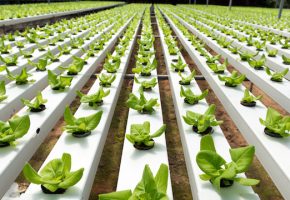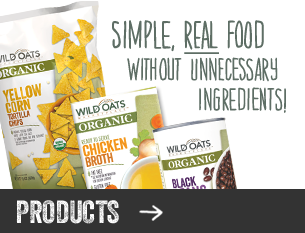Thursday evening I had the pleasure of attending the Organic Trade Association’s annual award dinner, held at the American Visionary Art Museum in Baltimore, MD. An evening designed to celebrate industry leaders and kick off Expo East, the event touted an impressive mix of farmers, activists and businesspeople (frequently in the same individual!). It was a multitasking crowd for a multi-varied movement.
At the table, I met a group of passionate, informed, and dedicated people- from research house NMI, Annie’s, Ancient Harvest, as well as a woman involved with FoodForward, coming soon to PBS. Each was generous in sharing their hard-earned knowledge, and I freely admit I took avid notes throughout the conversation. We talked industry trends, issues of capacity, and the challenges of finding enough certified organic land to meet the growing demand for organic products.
As the dinner began, an organizer alerted us to the long standing, non-denominational tradition of taking a moment to thank the farmers who worked to provide us the with the feast of organic meats, fruits, veggies and grains on offer. The room was silent for a moment as each offered up their appreciation. Then it was time to dig in.
The awards were given between courses, beginning with the Organic Farmer of the Year Award. Doug Crabtree of Vilicus Farms, this year’s recipient, spoke of “the number one challenge to organic farming is to grow more organic farmers…or, as we prefer to call them, land-stewards.” (Vilicus, as it happens, is Latin for “steward”). He then invited us online casino all to join him in discussing the issue further at a seminar the next morning at Expo East.
Next up, receiving the Rising Star Award, was founder of Naturepedic Organic Mattresses Barry A. Cik. Cik shared his inspiration in beginning the company, describing the experience of mattress shopping for his first grandchild- faced with the toxic materials used seemingly unilaterally, he said he had no choice but to come up with something better on his own.
Lastly was the OTA’s own Marty Mesh, receiving the Growing the Organic Industry Award. Mesh, a more than 40 year veteran of the organic movement, spoke at length about his commitment to bringing the principles of social justice to every stop along the supply chain. He took a moment to thank a lost friend, who passed away due to the health complications that arise from long-term exposure to the toxic chemicals used in conventional agriculture. He described his aha! Moment while engaged in conventional agriculture himself, having sprayed an apple orchard, saying- “and then it hit me- I had just applied poison to every single apple in that orchard.”
Mesh talked about how far the industry had come, joking that “we have infiltrated the USDA, and can no longer just stand outside and throw rocks, because we are they and they are we.” About current challenges, he pointed to “policies that do not support a change to organic (but) merely tolerate organic.” There a ripple of assent through the crowd. He included with a rallying cry meant to echo beyond the museum walls, “We need to ask eaters to be not just consumers, but food citizens, who take responsibility for their choices,” as well as a challenge to the crowd- “to celebrate tonight and then get back to work tomorrow.”
It was a pleasure and a privilege to be in the room when each guest unanimously answered that challenge with pride… and a standing ovation.


 Contact us
Contact us





